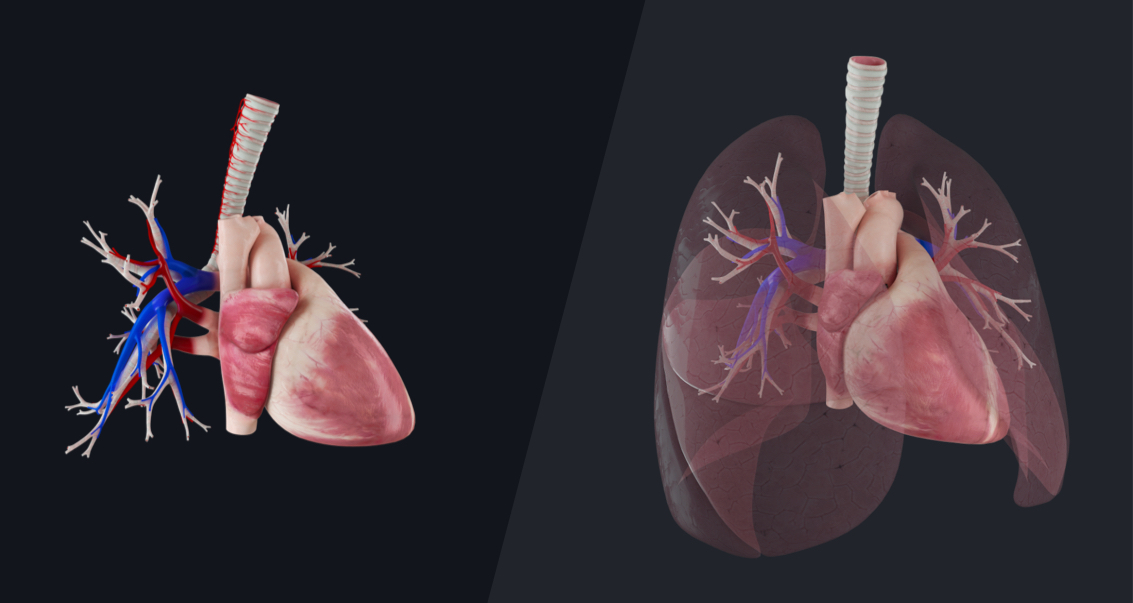
Most biochemical reactions in the body either generate energy or require energy to progress. Cellular organelles and tissues need oxygen to ensure these reactions proceed with ease.
The lungs are a pair of spongy organs found within the thorax and are involved in the gaseous exchange between atmospheric air and blood. This process is known as the respiratory cycle. At the lungs’ level, inhaled oxygen gets absorbed into the blood, and gaseous by-products are exhaled.
For the exchange of gases to occur effectively, the lungs require a dual vascular supply known as pulmonary and systemic circulations.
The pulmonary circulation is responsible for bringing deoxygenated blood from the body to the lungs for gaseous exchange and then returning oxygenated blood to the heart. This is then pumped back into the systemic circulation, and the cycle continues.
The pulmonary arteries carry deoxygenated blood at low blood pressures from the right ventricle to the lungs, where they form an extensive network of pulmonary capillaries that supply the alveoli. It is at this site that gaseous exchange occurs and oxygen gets absorbed into the blood through the alveoli. This freshly oxygenated blood returns to the left atrium of the heart via four pulmonary veins.
The bronchial circulation is part of the systemic circulation. It is responsible for supplying oxygenated blood at high blood pressures to the tissues that make up the conducting zone of the tracheobronchial tree and visceral pleura.
A paired group of left bronchial branches arise directly from the descending thoracic aorta. In contrast, the right bronchial branch arises indirectly from the descending thoracic aorta via the right-sided posterior intercostal artery, most commonly the third right posterior intercostal artery. Much of the blood supplied by the bronchial arteries returns to the heart via the pulmonary veins.
There needs to be adequate circulation of blood in the lungs for enough oxygen to get to the tissues, and any compromise to the blood supply to the lungs immediately decreases the partial pressure of oxygen in the blood. This scenario is known as hypoxemia. In many cases, it leads to a decrease in tissue oxygenation, a condition known as hypoxia.
Visually learn the blood supply to vital organs using the power of 3D anatomy. With learning tools such as Arterial Supply, Venous Drainage and Origin Path, understand the cardiovascular system like never before. Try it for FREE today.
If you found this blog post useful, you might also enjoy learning about auscultation of the lungs.
